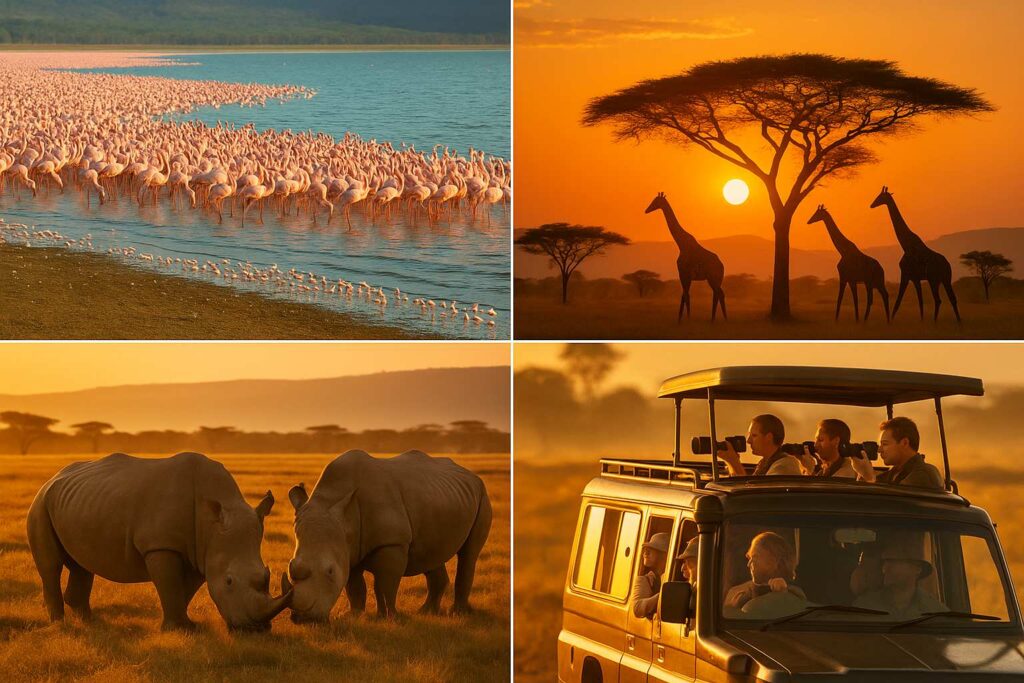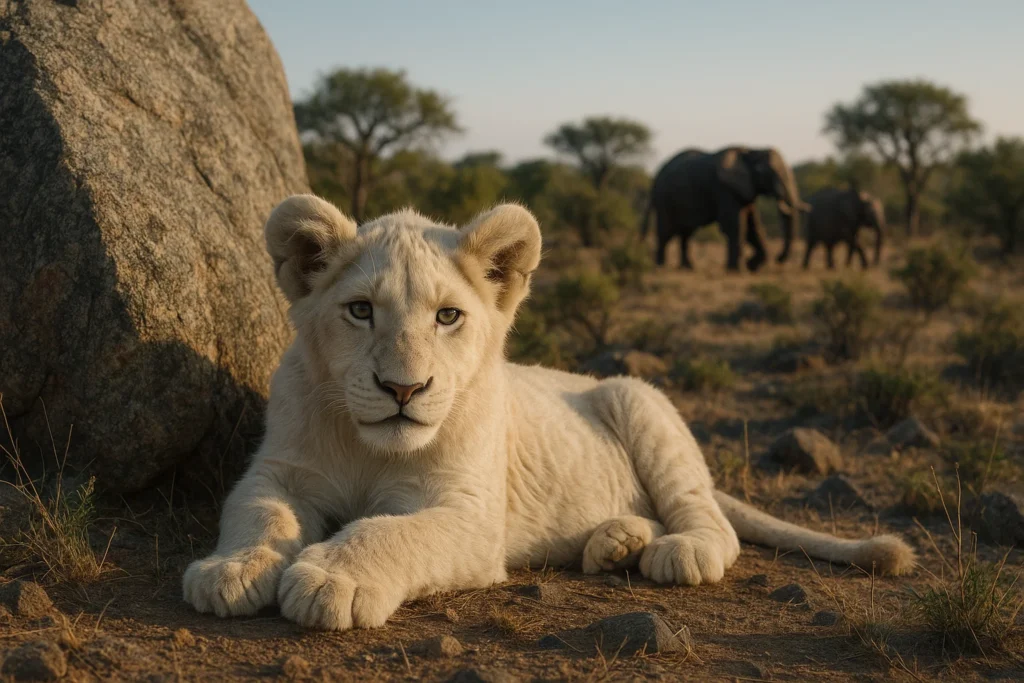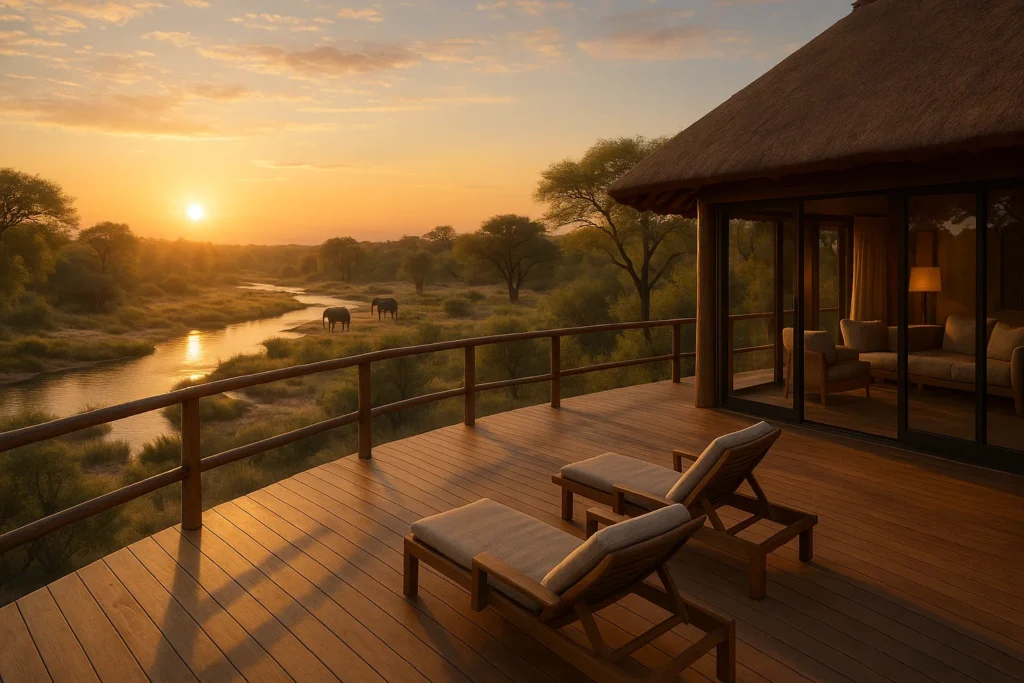Lake Nakuru National Park, nestled in Kenya’s Great Rift Valley about 160 km northwest of Nairobi, offers an unforgettable safari experience thanks to its iconic flamingos, rhino sanctuary, compact size, and breathtaking scenery.
Flamingo Spectacle & Rich Birdlife
Lake Nakuru, a shallow, alkaline soda lake, attracts thousands—sometimes millions—of lesser and greater flamingos feeding on cyanobacteria. This “greatest bird spectacle on earth” creates a mesmerizing pink shoreline vista. The park is also home to over 400 other bird species, including pelicans, African fish eagles, and Goliath herons.
Rhino Sanctuary & Big Five Highlights
Designated a rhino sanctuary in 1983, the park holds one of East Africa’s densest populations of both black and white rhinos. You’ll also likely spot leopards, lions, buffaloes, giraffes, and hippos—making Nakuru a condensed Big Five destination.
Spectacular Landscapes & Lookouts
Surrounded by escarpment cliffs, acacia woodlands, grasslands, and soda lake shorelines, Lake Nakuru offers dramatic viewpoints like Baboon Cliff and Lion Hill. The compact size of the park means a full circuit can easily be completed in a day.
Convenient Accessibility & Ideal Itinerary Stop
Only a 2–3 hour drive from Nairobi via a well-paved road—or a quick charter flight to Nakuru airstrip—the park is perfectly placed on Kenya safari routes. Many itineraries include Nakuru as a serene stop between Maasai Mara and Amboseli.
Year‑Round Wildlife & Seasonal Variations
Dry seasons (June–October, January–March) provide excellent wildlife viewing, as animals cluster at water’s edge. While flamingo numbers may fluctuate with changing water alkalinity, wildlife sightings remain plentiful.
Top Activities in Lake Nakuru
- Game drives around the lake: Enjoy rhino sightings, herds of zebra, giraffe, buffalo, and occasional lion or leopard.
- Birdwatching at the lakeshore: Capture images of flamingo flocks, pelicans, fish eagles, and other species.
- Scenic viewpoints: Pause at Baboon Cliff or Lion Hill for sweeping vistas and birdlife observation.
- Walking safari nearby: Certain lodges or Iyula conservancy offer gentle guided nature walks.
- Cultural and archaeological excursions: Extend your visit to nearby Hyrax Hill—a Neolithic site with a museum near Nakuru town.
Sample Kenya Safari Itinerary with Lake Nakuru
- 3–5 days: Nairobi → Lake Nakuru → Maasai Mara (or Amboseli/Samburu)
- 5-day trip: Nairobi → Lake Naivasha → Lake Nakuru → Maasai Mara → Return
- 10-day circuit: Cover major parks like Nakuru, Naivasha, Maasai Mara, Amboseli, then explore coastal or highland extensions.
FAQs
The dry seasons—June to October and January to March—offer optimal wildlife viewing, as animals gather around the shrinking lake.
Yes—they’re seen most years, though their numbers fluctuate based on lake alkalinity and food supply.
Absolutely. Nakuru is a dedicated sanctuary for black and white rhinos and hosts sightings of lions, leopards, buffaloes, giraffes, and more.
A full-day visit (6–8 hours) is usually enough. Overnight stays let you enjoy morning and evening game drives and scenic sunrises.
Drive ~2–3 hours from Nairobi via A104, or fly into Nakuru Airstrip and enjoy short transfers to the park.






